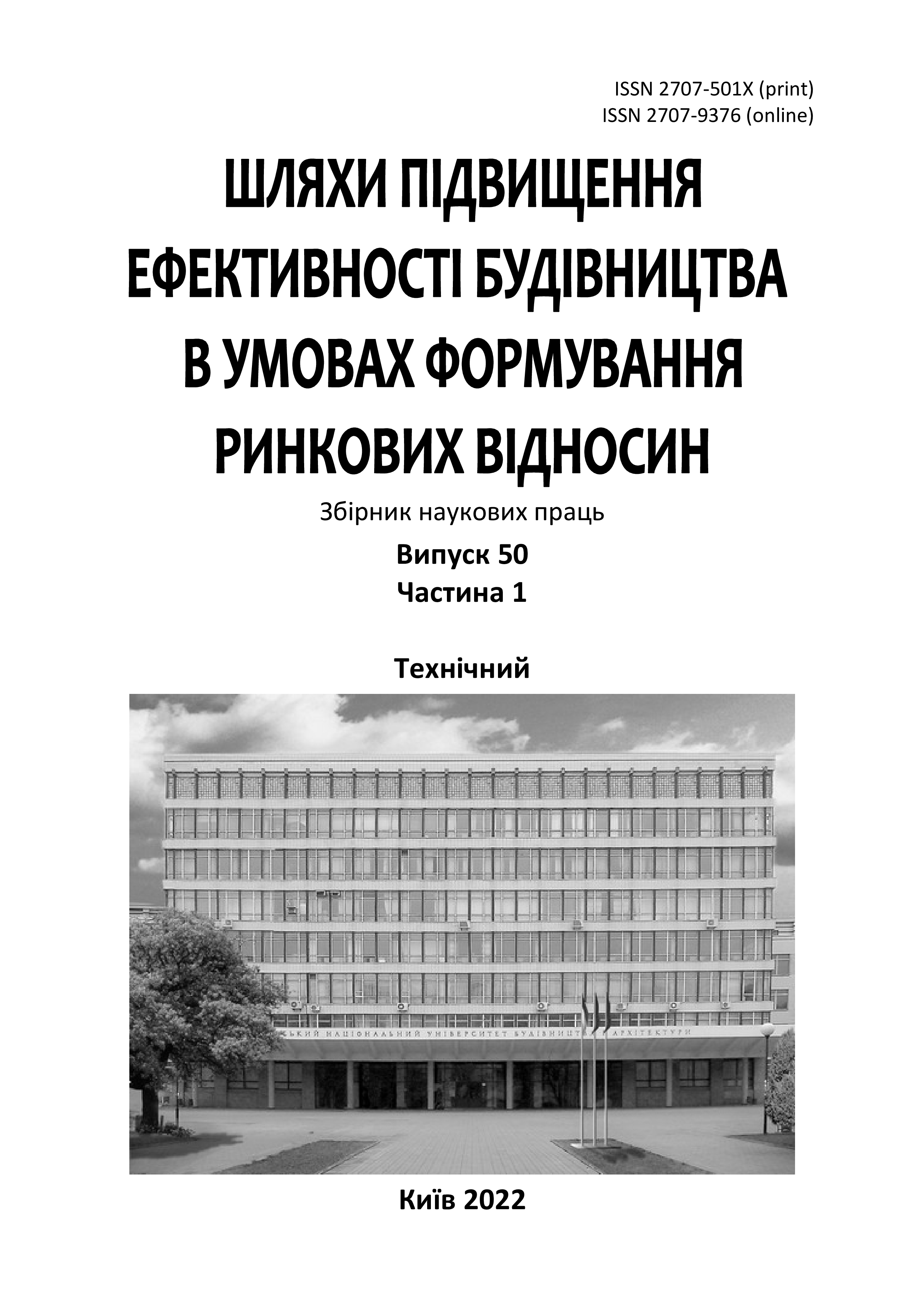Use of waste of metallurgical and hydrogen industry in the production of binding substances
DOI:
https://doi.org/10.32347/2707-501x.2022.50(1).43-50Keywords:
granulated blast furnace slag, iron ore beneficiation waste, alkaline component, hydrophobic surfactantAbstract
The current state of construction science development dictates the use of high–strength binders and concrete based on them during the construction of unique buildings and structures, as well as the construction of complex constructions and their repair.Currently, two main directions in the use of mineral raw materials have been clearly defined. The first direction consists in increasing the degree of use of natural resources at existing and new enterprises. The second is in the creation of zero–waste and low–waste productions associated with technologies aimed at maximum utilization of waste. Thus, multi–tonnage waste of metallurgical enterprises – domain slag – found wide application, first of all, in the building materials industry.
The effect of the interaction between sodium silicates and iron compounds and the resulting so–called slag binder, which is a mixture of granulated blast furnace slag with waste from mining and beneficiation plants (iron–containing mineral complex), closed with water, was established.These two provisions served as the basis for obtaining a new type of binder, the so–called alkaline slag slurry, which is a mixture of granulated blast furnace slag with an iron–containing mineral complex. At the same time, iron ore beneficiation waste is used as an iron–containing mineral complex. The specified mixture, when mixed with an aqueous solution of an alkaline component, in the presence of a hydrophobic surface–active substance hardens with the formation of an artificial stone, which has a compressive strength of up to 160 MPa. In a model experiment, the influence of the composition of the composite, which is a mixture of industrial production waste: granulated blast furnace slag and iron ore beneficiation waste, on the strength of the stone obtained as a result of the hardening of this composite when mixing it with an aqueous solution of an alkaline component in the presence of a hydrophobic surfactant was studied.
References
Большаков В.И., Бондаренко С.В. Отходы горно–обогатительных комбинатов и их использование в строительстве. Днепропетровск: 1999. 96 с.
Бондаренко С.В., Моисеенко В.В., Бондаренко Г.Н. Комплексное использование минерально–сырьевых ресурсов горно–обогатительных комбинатов Украины. Вопросы химии и химической технологии. 2003. Вип.5. С. 29–32.
Бондаренко С.В. Расширение области использования строительных материалов на отходах ГОК. Матеріали науково–технічної конференції ”Перспективні напрямки розвитку науки і технології тугоплавких неметалевих і силікатних матеріалів.” Дніпропетровськ: Видавництво УГХТУ, 2003. С.6.
Глуховский В. Д., Пахомов В. А. Шлакощелочные цементы и бетоны. Киев: Будивельник, 1978. 183 с.
Menendez G., Bonavetti V., Irassar E.F. Strength development of ternary blended cement with limestone filler and blast–furnace slag. Cement Concrete Research. 2003. Vol. 25. № 1. Pp. 61–67.
Охотин В.В., Кульвинская А.И. Стабилизация грунтов методом силикатирования. Стабилизация грунтов. 1938. С. 102–116.
Резниченко П.Т., Чехов А.П. Охрана окружающей среды и использование отходов промышленности. Днепропетровск: Проминь,1973. 94 с.
Батудаева А.В., Кардумян Г.С., Каприелов С.С. Высокопрочные модифицированные бетоны из самовыравнивающихся смесей. Бетон и железобетон. 2005. № 4. С. 14–18.
Kim B., Jiang S., Jolicoeur C., Aytcin P.–C The adsorption behaviour of PNS superplasticizer and its relation to fluidity of cement paste. Cement Concrete Research. 2000. Vol. 30. № 6. Pp. 887–893.
Torresan I., Magarotto R., Zeminian N. Interaction between Superplasticizers and Limestone Blended Cements – Rheological Study. The Sixth CANMET/ACI International Conf. on Superplasticizers and Other Chemical Admixtures in Concrete. SP–195, 2000: Proceedings Nice (France), 2000. Pp. 229–247.
Годэн А.М. Флотация. М.: Госнаучлит по горному делу, 1959. 653 с.
Шишкина А. А. Свойства и технология пенобетона, модифицированного оксидами железа: дисс. на соиск. учен. степ. к.т.н., спец. 05.23.05. Кривой Рог, 2010. 178 с.
Бурлакова Е. Б. Эффект сверхмалых доз. Вестник российской академии наук, 1994, том 64, М 5, С. 425 – 431.
Shyshkina A. Research into effect of complex nanomodifiers on the strength of fine–grained concrete. Eastern–European Journal of Enterprise Technologies, 2018. 2/6 (92). 29 – 33.
Тевяшев А.Д., Шитиков Е.С. О возможности управления свойствами цементобетонов с помощью наномодификаторов. Eastern–European Journal of Enterprise Technologies, 2009. 4/7. 35 – 40.
Downloads
Published
How to Cite
Issue
Section
License

This work is licensed under a Creative Commons Attribution 4.0 International License.
Authors who publish with this journal agree to the following terms:
- Authors retain copyright and grant the journal right of first publication with the work simultaneously licensed under a Creative Commons Attribution License that allows others to share the work with an acknowledgement of the work's authorship and initial publication in this journal.
- Authors are able to enter into separate, additional contractual arrangements for the non-exclusive distribution of the journal's published version of the work (e.g., post it to an institutional repository or publish it in a book), with an acknowledgement of its initial publication in this journal.
- Authors are permitted and encouraged to post their work online (e.g., in institutional repositories or on their website) prior to and during the submission process, as it can lead to productive exchanges, as well as earlier and greater citation of published work (See The Effect of Open Access).

